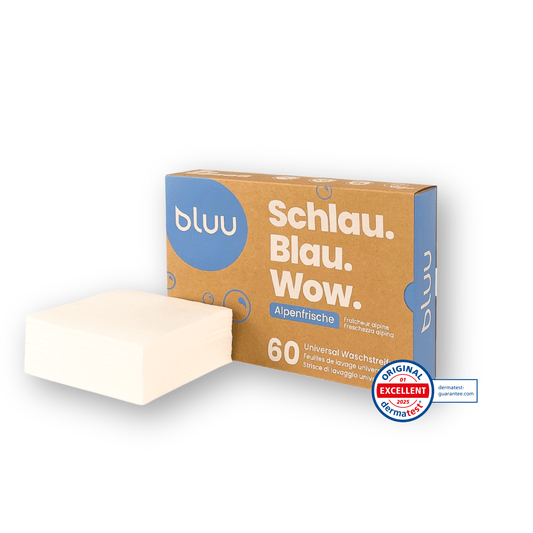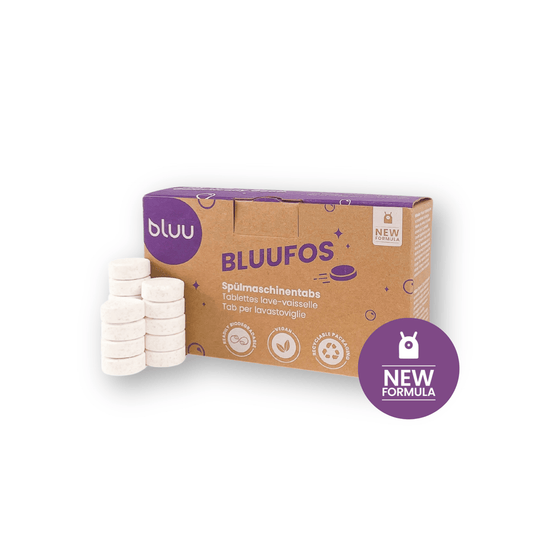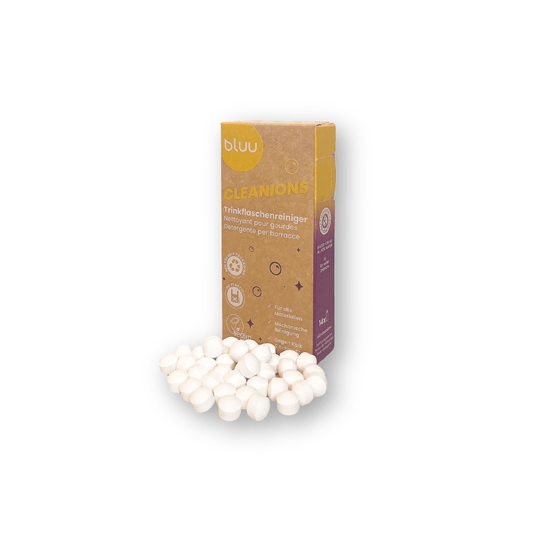Removing stains is important, because it can happen quickly: Red wine on a white shirt, coffee on a fresh blouse or grass stains on the kids' pants after playing football. It is not always possible to remove the stains during washing, especially when washing at lower temperatures and with environmentally friendly detergent - a stain remover is needed, but does it necessarily have to be a chemical product? Or are conventional household products also sufficient?
Not all stains are the same. In this article, you can find out how to successfully combat the most common stains with simple household products and without any chemicals.
For stains: react quickly!
It generally helps with all types of stains: If you react quickly and correctly, you win! Because the faster a stain with the right products the less time it takes for the stain to set and dry. However, it is just as important to take the first step, the right product agent.
After all, careless rubbing or water can cause the stain to penetrate even deeper into the fibers.
These most common types of stain can be removed with standard household products:
- Coffee stains
- Red wine stains
- Grease and oil stains
- Blood, egg and urine stains
- Deodorant and sweat stains
- Chocolate stains
- Baby bowel movements and vomit
In general, it is of course also important to follow the care instructions on the garments, as particular care is required with delicate materials, colored and dark fabrics. Stain treatment can also cause new stains due to fading and residues in the fibers. For silk garments in particular, it is better to go to a professional dry cleaner to avoid lasting damage.
But how exactly do you remove the individual types of stains?

Dark coffee stains on clothing or textiles
With coffee As with most other stains, the following applies act as quickly as possible. The first thing to do is to remove the moisture from the coffee stain, ideally by dabbing the stain with some kitchen paper. Then wash out the coffee stain by hand with warm water; if there was milk in the coffee, you should use an environmentally friendly detergent, e.g. ¼ washing strips from bluu.
If you are out and about and don't have kitchen paper to hand, or you only discover the stain the next day: it's best to put some baking soda on the stain and leave overnight, then rinse with cold water and wash in the washing machine with your eco-friendly detergent on the next wash cycle.
Red wine stains on clothing or tablecloths
Who knows the hot tip for red wine stains not? Sprinkle salt on it! In fact, salt generally removes the liquid, so the stain can't spread any further, but there is also a disadvantage: on a non-white fabric this method can very well leave discoloration and new stains.n. Especially with dark or colored textiles, it is therefore advisable to use some carbonated mineral water (so as strongly carbonated as possible as possible) onto the fresh red wine stain and wash in the washing machine after leaving for approx. 10 minutes.
If you are at home and have white wine vinegar to hand: soak a non-staining cloth in white wine vinegar and carefully dab the stain with it. Then wash the garment in the washing machine.

Grease and oil stains
As with red wine, it also helps with grease or oil stains carbonated mineral water.
Apply the mineral water onto the grease or oil stains and leave for approx. 10 minutes. Then wash in the washing machine.
Older and dried stains are best treated with our stain soap: moisten the stain with water, gently rub in the stain soap and leave to work for a few minutes. Wash in the washing machine or by hand according to the fabric care instructions with bluu washing strips.
Blood, egg and urine stains
The most important thing for Blood, egg and urine stains: : only cold water and do not use warm or hot water. This is because above 40° C the protein contained in blood, eggs or urine coagulates and penetrates even deeper into the fabric fibers.
The stains can normally be washed out relatively easily by hand with cold water.
If this does not work, it is worth turning to the miracle cure baking soda carefully rub into the stain, leave overnight and rinse with cold water. Then wash in the washing machine.

Brown chocolate stains
Chocolate stains can be removed with various household household products. As with red wine or grease stains, carbonated mineral water helps with fresh chocolate stains. Drizzle mineral water onto the chocolate stain and leave to soak for approx. 10 minutes, then wash in the washing machine as usual.
If the stain is older and more stubborn, it can be removed in advance with our stain soap Leave to soak for approx. 10 minutes, rinse by hand and then wash the garment in the washing machine.
Deodorant stains and sweat stains on T-shirts
Annoying Deodorant stains and sweat stains on T-shirts are something we are all familiar with. These can normally be simply washed out with lukewarm wateryellowish stains, we can also use common household common household productsDepending on how stubborn the stain is, there are various options.
Citric acid works very well on white clothes. You can soak the clothes in a mixture of citric acid and water (3 tablespoons of citric acid is enough) for a long time, preferably overnight. Then wash the clothes in the washing machine. Caution: The citric acid could cause fading on colored or dark fabrics.
For colored or dark laundry in combination with deodorant stains or sweat stains, something else is recommended: Vinegar or vinegar essence. To do this, soak the garments in a mixture of vinegar and water (in a 1:4 ratio) for a longer period of time, preferably overnight. Then rinse and wash in the washing machine as usual.
Particularly stubborn sweat stains or deodorant stains can also be with baking powder but special care should be taken with colored and dark laundry. Here's how: First, mix a sachet of baking soda with water to make a paste. Apply this paste specifically to the deodorant stains on the clothes and leave to work for approx. 15 minutes before washing the clothes in the washing machine on the usual washing program.
Baby bowel movements or vomit
For stains from baby bowel movements or vomit, it helps to rinse the stains rinse the stains thoroughly with cold waterrub in any residue with curd soap (or alternatively a mixture of water and vinegar), then wash out and, if possible, leave to dry in the sun. Then wash the garments in the washing machine.
Important: to avoid allergic reactions to baby's delicate skin, it is advisable to use as few chemicals as possible chemicals as possible and use mild and environmentally friendly detergents such as the "Unscented" washing strips from bluu should be used.

Stubborn wax stains and wax residue
Here's something else that everyone knows and isn't so easy to get out: wax stains or wax residue. For wax stains cold is the best way to remove wax stains. at least 30 minutes You can place the textile in the freezer for at least 30 minutes, after which the frozen wax should be able to be removed from the surface. What usually remains is a visible stain. This is where the iron and some blotting paper come into play. Simply place the blotting paper on the wax stain and iron over it with the iron (low to medium setting). This will liquefy the wax in the textile fibers and the blotting paper the blotting paper absorbs the wax. When no more wax is visible, finish by washing the garment in the washing machine.
Our conclusion
Stubborn stains can be quite annoying, but they don't have to drive you to despair. In most cases, common household products are completely sufficient to combat and remove all kinds of stains. It is important to act as quickly as possible and avoid a few mistakes. Chemical stain removers should only be used in exceptional cases, as they are not normally biodegradable and heavily pollute waste water.




